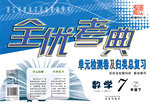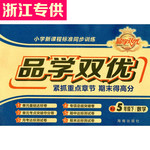题目内容
C
The word “death” is a word many Chinese friends tell me I should not say aloud. They advise me to avoid the word because only speaking of it may bring ill fortune. I deeply believe, however, that to know how to live, we must also know how to die. The problem is how do we talk about death?
Like everyone in Taiwan this week, I have had “Tomb Sweeping Day”. I am proud to be part of a people whose culture sends millions of families to cemeteries on this special day to share memories and endless love.
Today, eight days after the death of Pope John Paul II, millions of people of all backgrounds still grieve(悲痛) his passing away. He was a deeply human person who knew how to laugh and show emotions, a writer with a gift for words ,a leader who appealed to us by the sheer light of his love for life.
On the same day and only hours before the Holy Father left us, a friend of mine named Veronica McBride died of cancer in a small Wisconsin city. My friend Veronica was 52 years old. She was an attractive, humorous young woman who, as the saying goes, “never married”. She published several humor books with her mother, Mary McBride. She enjoyed traveling, and for years sent Christmas card photos of herself standing beside monuments or odd animals. She fought cancer for five years. She joked about her treatment keeping her pretty because it kept her thin, and told me she didn’t mind losing her hair because of chemo therapy. “I get to wear nice wigs!(假发)”
The last time I saw Veronica was when I visited her family on a sunny day in August in 2003. When she burst into the front door later and saw me in the living room, she ignored me completely in her hurry to hug her newest baby nephew, leaving me shaking my head in laughter at her.
As we look to the significance of the Holy Father and his life, surely we must also keep our eyes open to see the wonder and goodness in ordinary people who show us how to live and how to die.
64. The purpose of the article is ___________.
A. to memorize his friend Veronica
B. to talk about the significance of life and death
C. to teach us how to face life and death
D. to compare his friend and the Holy Father Pope John Paul II
65. The underlined phrase “chemo therapy” in Paragraph 4 probably means __________.
A. a medical treatment B. a kind of cancer
C. a kind of medicine D. the newest machine
66. Why does the writer compare the Holly Father with his friend?
A. Because they are both the persons he admires.
B. Because they have a lot in common.
C. Because he wants to show that ordinary people can be great as well.
D. Because he wants to memorize them both.
67. From the phrase “burst into”, we can see that Veronica is ____________.
A. brave B. sportive C. humorous D. energetic
【小题1】
【小题2】
【小题3】
【小题4】
【小题5】

 全优考典单元检测卷及归类总复习系列答案
全优考典单元检测卷及归类总复习系列答案 品学双优卷系列答案
品学双优卷系列答案Every child has written their names on the beach at some point.
But whereas most people’s “handwriting” is washed away, one super-rich Arab sheikh(酋长) has ensure that his graffiti(胡写乱画) will last a little longer.
Hamad Bin Hamdan Al Nahyan, 63, has scrawled his name in sand on an island he owns with letters so big that they be seen from space.
The word “HAMAD” measures 1,000 meters high and is a staggering two miles long from the “H” to the “D” on the Al Futaisi Island.
And rather than allow the writing to be washed away by the ocean, the letters actually form waterways that absorb the encroaching(渗入) tide. The ruler’s name is even visible on Google’s map service.
Hamad dreamed up the idea and had his workmen work hard for weeks to craft the enormous piece of sand graffiti. It is not known how much it cost to make.
However, the sheikh boasts a personal fortune second to the Saudi king’s.
Hamad, also known as the “Rainbow Sheikh”, is a member of the Abu Dhabi Ruling Family.
He is understood to have some 200 cars including seven Mercedes 500 SELs painted in different colors of the rainbow which he stores in a giant pyramid.
The Arab sheikh had a taste for doing things on a large scale. He built the world’s largest truck—eight times the size of the Dodge Power Wagon, with four bedrooms inside the cabin.
Hamad constructed a motor home in the shape of a giant globe which is exactly 1 millionth the size of the actual earth.
Alongside his displays of wealth he has become a well-known philanthropist(慈善家) in medicine and supplied a complete Kinney stone operating theatre to a public hospital in Morocco where he continues to fund its stuff.
【小题1】Which of the following in NOT true according to the passage?
| A.Hamad is a man who wants himself to be well-known from apace. |
| B.Hamad is a super-rich person who always does something unusual. |
| C.Hamad is a man who is always so mean in his family |
| D.Hamad is a man who boasts his fortune is second to the Saudi king’s |
A. The word “HAMAD” measures 1,000 meters wide and high.
B The word “HAMAD” is a staggering two miles long from the “H” to the “D”.
C. The word “HAMAD” actually forms huge waterways that absorb the encroaching tide.
D. The word “HAMAD” cost his workmen a lot of hard work for several weeks.
【小题3】Why does Hamad have his seven Mercedes-Benz500 SELs painted in different colors?
| A.Perhaps he hoped his cars were stored in a giant pyramid safely. |
| B.In some ways he could make a very strange rainbow. |
| C.Maybe he just wanted to show off his wealth. |
| D.He is always interested in making his cars like these. |
| A.The Rainbow Sheikh’s name can be seen from space |
| B.The richest Arab sheikh’s name has made many funny things |
| C.A great person likes doing things on a large scale |
| D.A well-known philanthropist displays his wealth |
The question this week comes from our listener Herve Acard, who asks about the American word “OK”, which means “all right” or “acceptable”. It expresses agreement or approval. The word is used more often than any other word in the world.
Language expert Allen Walker Read said the word began as a short way of writing a different spelling of the words “all correct”. Old stories say some foreign-born people would write “all correct” as o-l-l k-o-r-r-e-c-t and spoke it as “OK”. Some people say it came from the Native American Indian tribe known as the Choctaws. The Choctaw word “okeh” means the same as the American word “OK”. Experts say early explorers in the Western America spoke the Choctaw language in the nineteenth century. The language spread across the country.
According to some people, “OK” was a way to shorten Greek words that mean everything is fine. It is also said that a railroad worker named Obadiah Kelly invented the word. He is said to have put the first letters of his names — O and K — on each object people gave him to place on the train.
Another explanation is that “OK” was invented by a political organization that supported Martin Van Buren for president in the 1800s. They called their organization the OK Club. The letters O and K were taken from the name of the town where Martin Van Buren was born — Old Kinderhook, New York.
Not everyone agrees with these explanations, but experts do agree that the word is purely American and has spread to almost every country on Earth. Yet in the United States, it is used mostly in speech. Serious writers prefer using words, such as “agree”, “approve” or “confirm” instead.
1.Where does the passage probably come from?
A. A newspaper. B. A textbook.
C. A radio program. D. A language magazine.
2.Of the following origins, which one has the same meaning as the American word “OK”?
A. The OK Club
B. The Choctaw word “okeh”
C. The word invented by Martin Van Buren
D. The short form of “all correct”
3.According to the passage, which statement is NOT true?
A. People disagree about the origin of “OK”.
B. “OK” is often used in formal writing in the USA.
C. The word “OK” is widely used all over the world.
D. Native American language once influenced American English.
Section One
The city is an accumulation of human civilization. Just as the American social philosopher (哲学家) Lewis Mumford put it, it is a special system which, fine and compact, has been designed to preserve the fruits of human civilization. Many Western languages have developed their versions of the term “civilization” from the same Latin (拉丁语的) word “civitas”(meaning “city”), and it is by no means a coincidence. The city has played a significant role in the perfection of order in human society.
Section Two
The emblem, showing the image of three people ― you, me, him/her holding hands together, symbolizes the big family of mankind. Inspired by the shape of the Chinese character “世” (meaning the world), the design conveys the organizers' wish to host an Expo which is of global scale and which displays the various urban cultures of the world.
Section Three
Created from the inspiration of Chinese character “人”, the design roots deeply in Chinese culture. It tells the world the eternal core (永恒的核心) and theme of Shanghai World Expo will be always human. The mascot “Haibao” will become the messenger for the theme of World Expo 2010 Shanghai China “Better City, Better Life”.
The basic structure of the Chinese character “人” in which each stroke(一笔,一划) supports each other also shows the concept that the beautiful life should depends on mutual-help. If the human are willing to support one another, the harmony among human, nature, and society will be available. Such an urban life will be nice.
Haibao’s confident smile is expressing his sincere greeting from China ― “World Expo 2010 Shanghai China welcomes you!”
1. Section One mainly tells us about ______.
A. the part cities play in human civilization B. the development of the word “city”
C. why the Expo is held in Shanghai D. where human civilization originated
2.The underlined word “it” in Section One refers to ______.
A. the civilization B. the philosopher C. the word D. the city
3. Which correctly matches the sections with the pictures described in the passage?
|
Pictures |
|
|
|
|
A. |
Section One |
Section Two |
Section Three |
|
B. |
Section Two |
Section Three |
Section One |
|
C. |
Section Three |
Section Two |
Section One |
|
D. |
Section Three |
Section One |
Section Two |
4. The second paragraph in Section Three explains how the creation is connected with the _____ of the Chinese word “人”.
A. story B. meaning C. shape D. usage


